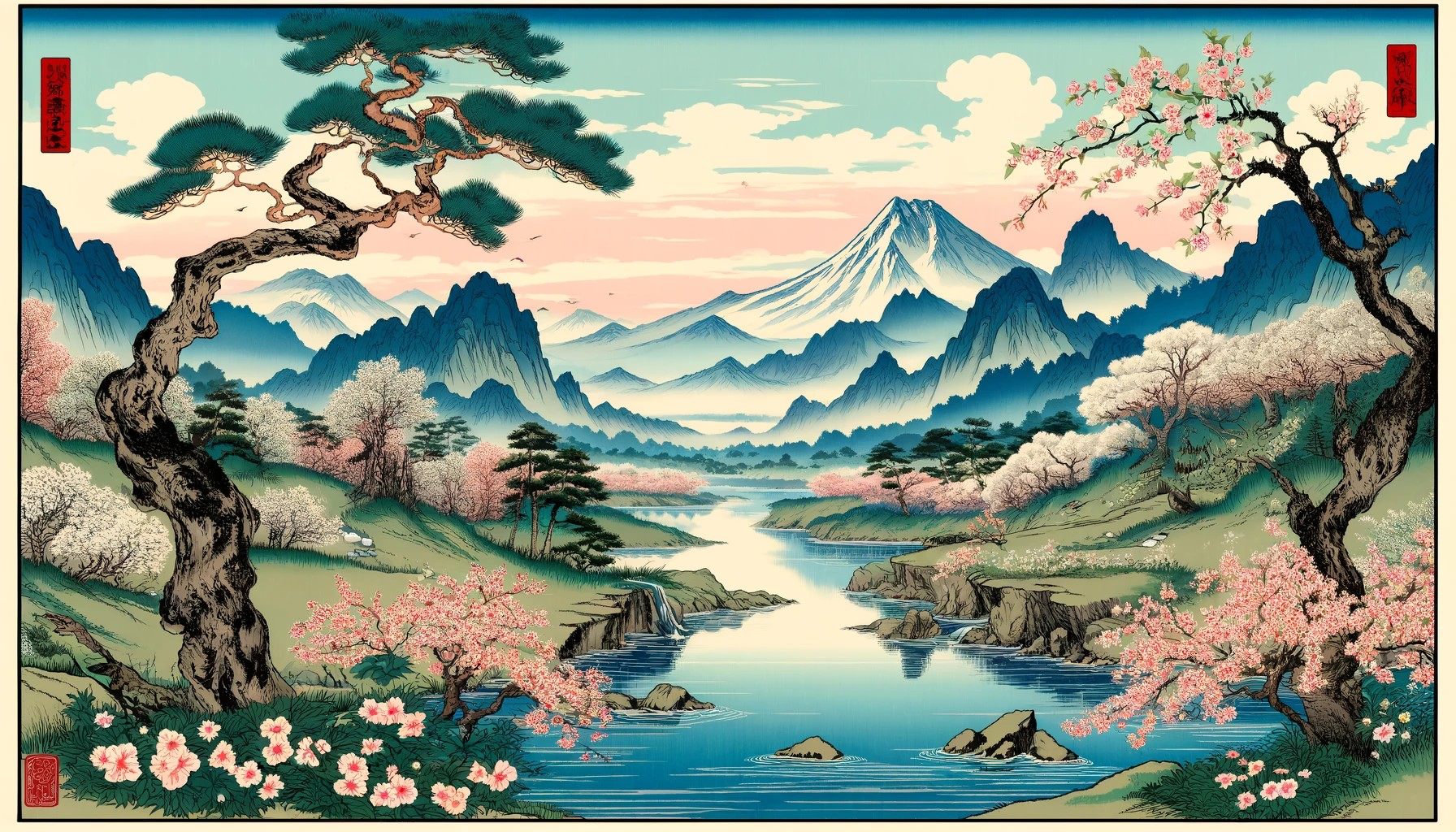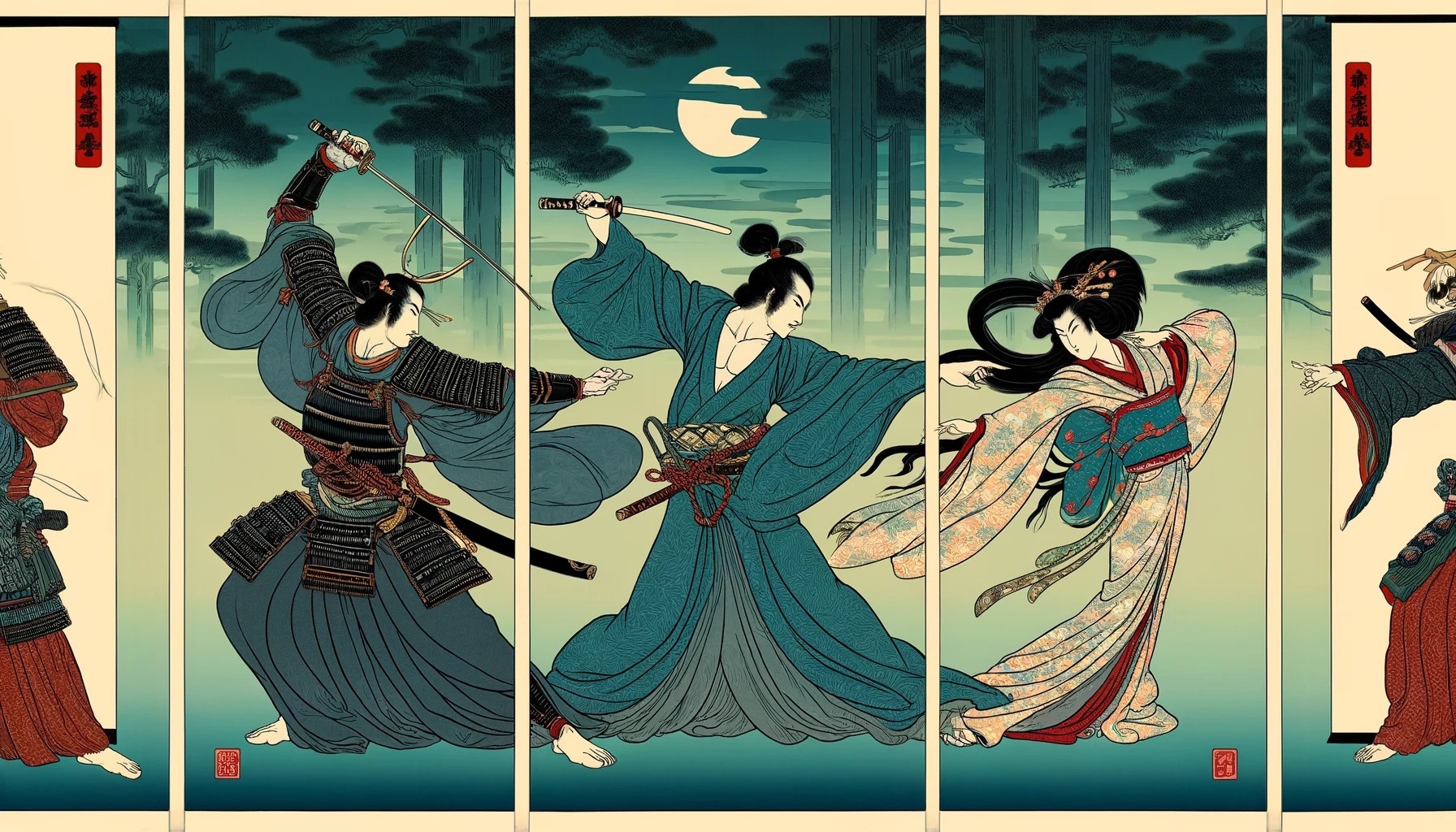Mizuno Toshikata (1866 ~ 1908)
Mizuno Toshikata (水野年方), born in Edo as Kumejiro Nonaka (野中久米次郎), was a Japanese artist who served as a bridge between
traditional ukiyo-e and modern Japanese printmaking. He began studying ukiyo-e at the age of fourteen under Tsukioka Yoshitoshi
(月岡芳年), but had to interrupt his studies due to the bizarre behavior of his master, which his father could not accept. Despite this,
he continued his education with various teachers, exploring different styles and subjects including Western-style painting and rendering.
Toshikata later returned to Yoshitoshi's studio, where the master, impressed by his talent, designated him as his successor.
During his career, Toshikata worked as an illustrator for the "Yamato Shinbun" (大和新聞) newspaper and produced lithographs for the literary magazine
"Shinshosetsu" (新小説), as well as sensō-e (戦争絵, war prints) during the Sino-Japanese War. He is best known for his works such as bijinga
(美人画, pictures of beautiful women), kuchi-e (口絵, frontispieces) used for literary magazines and novels, and his prints depicting the modernizing
Japan of the Meiji era.
Among his students were key figures of the Shin Hanga movement such as Kaburagi Kiyokata (鏑木清方), who taught Itō Shinsui (伊藤深水) and Kawase Hasui (川瀬巴水).
Toshikata died of overwork at the age of forty-two in 1908. His legacy continues to be studied for its artistic and historical value, reflecting his crucial role in the
evolution of Japanese printing.

Viewing a waterfal: women of the Jōkyō era
Thirty six elegant selections

Love letter; a woman from the Genroku era
Thirty six elegant selections


